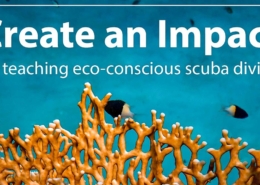Top 5 most productive things to do if the store is slow
By John Bentley
It’s been an interesting time for divers and dive shops. Interactions and travel have been limited, and some areas are requiring non-essential businesses to close. Times like these can be alarming for small business owners, especially in the recreation business. There is a positive light at the end of the quarantine, although it’s uncertain when that will be. The number of people working or learning from home has skyrocketed and they are quickly becoming bored. Virtual life can only be so much fun. People are browsing social media more, thinking of their next adventure. It may be possible to position you and your shop to be better than ever, once the flood gates open for those who are seeking an adventure.
If teaching opportunities are limited or impossible and there is little to no foot traffic, what is there for dive centers to do? There are unlimited possibilities, so it’s important to choose the projects and tasks with the highest return on investment (ROI). While these may not be applicable to everyone, here are the top picks for what to do when the shop is slow.
Be social…but only on the internet.
We need to take the CDC’s recommendations seriously, but that does not mean you can’t remind your customers of the adventures that await them. Capitalize on social media with photos of the underwater world, flashbacks to previous adventures, and a schedule of travel and training available to divers later in the year. Be sure to tag customers where appropriate and don’t let your newsletters slip. Just because classes may be on hold for the next few weeks, doesn’t mean people don’t need to hear about Bonaire in December or Truk in February!
Strategize
If Q3 and Q4 travel isn’t planned to accommodate the post-quarantine rush, then sit down with some caffeine and get it done! Be sure to create graphics and other visually appealing support materials to captivate your audience and get them pumped to go diving! Inactive diver and scuba discovery classes should be a big component of your schedule later in the year.
Sell Right Now
The ITI eLearning system is a great way to take a break from Netflix and quarantinis. Blast your email list of recent open water graduates, reminding them about Nitrox and Advanced Adventure. Talk to people ready to become dive professionals about knocking out the eLearning component while in lockdown. It’s a great time to make a sale, give your customers something productive to do and something good to look forward to.
Reengineer Merchandising
Getting up from the computer and moving will help with the lack of physical activity. Without customers, it’s a good time to take a step back and see if you’re breaking any of the cardinal rules of merchandising. We’ve listed the typical top offenders for dive centers below. Reworking the store to follow these steps will keep customers in your store longer and incentivize sales.
- Calm vs. Chaos
This one is the mack-daddy of merchandising rules. Is your store clean and organized? Could it be mistaken for a high-end backpacking store or ski retail floor? If you can comfortably exchange a photo of your store and an REI then it’s time to clear the clutter and get things organized. Merchandisers might call this “creating a calm and welcoming environment.” Clutter and mess are chaotic and don’t provide an accepting atmosphere for customers. To be clear, this doesn’t mean you have to go out and spend 10K on high-end displays – you can have a calming nature even with simple displays. If you can’t pass the “REI test,” then none of the other rules matter. - Paradox of Choice
Too many is not a good thing. Keep your displays simple. The “good, better, best” philosophy – or any odd-numbered, apparently different selection – is the golden rule. A wall full of choices not only creates a chaotic feeling, but it doesn’t help drive sales. - Silent Sales
According to some studies, most individuals prefer the retail store but aren’t fans of salespeople until they’ve built a relationship. That’s why silent sales tools, like storytelling, are so vital for your customer’s experience. Show them the adventure visually to drive the sale.
This is not an exhaustive list of merchandising rules, but the major offenders that can be fixed when visits are low. Youtube, Google, and Paco Underhill’s book “Why We Buy” are great resources for the retailers who need intermediate or advanced advice to improve their storefront.
Keep Learning/Keep Growing
It doesn’t matter what it is; you should continue to find ways to grow as an individual and professional. You can grow as a dive instructor, a marketing person, or a movie director. There are plenty of options out there for con-ed when it comes to SDI. Have you looked at tech diving? Public safety? Have you had a chance to really familiarize yourself with First Response Training and our Bloodborne Pathogens program or other courses? And if you want to steer away from scuba and improve other areas where you can do better, there are many sites and articles that discuss website content and its importance, as well as the little things that get you better visibility online. If Hollywood was always your thing, take some free online course on how to use your phone to make quality ads, so you can share them on the social networks and get people excited about what you do. The bottom line is that there are many courses available online, a lot of them free, that can help you be a better version of yourself – things you could not learn and embrace before because you simply did not have the time.










发表评论
想加入讨论吗?请发表您宝贵的意见!